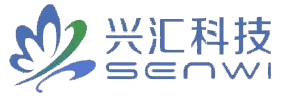This time, we are sharing the article "Efficacy Observation of Radial Extracorporeal Shock Wave Combined with Conventional Rehabilitation Treatment for Peripheral Facial Palsy" published in Chinese Journal of Rehabilitation by Zhu Hongliu, Wang Wei, Hu Xiaoyu, Wang Shijie, etc. in July 2024.
Purpose: To explore the clinical efficacy of radial extracorporeal shock wave therapy (rESWT) combined with conventional rehabilitation therapy in the treatment of peripheral facial paralysis.
Methods: A total of 40 patients with peripheral facial paralysis were enrolled and randomly divided into a control group and an observation group, with 20 patients in each group. The control group received conventional comprehensive rehabilitation therapy, while the observation group received radial extracorporeal shock wave therapy in addition to the treatment of the control group. The total treatment duration for both groups was 4 weeks.
On the basis of the treatment for the control group, the observation group was additionally treated with radial extracorporeal shock wave therapy (ESWT) using a radial extracorporeal shock wave therapeutic apparatus. A probe with a diameter of 15 mm was selected. During treatment, the patient was placed in a supine position, and a coupling agent was applied to the affected side of the face. The shock wave was applied to the buccal muscle group and the orbicularis oris muscle group, with a pressure intensity of 1.3–1.8 bar, a frequency of 8–10 Hz, and 500 shocks per site. The treatment was administered twice a week for a total of 4 weeks.

On the basis of the treatment for the control group, the observation group was additionally treated with radial extracorporeal shock wave therapy (ESWT) using a radial extracorporeal shock wave therapeutic apparatus. A probe with a diameter of 15 mm was selected. During treatment, the patient was placed in a supine position, and a coupling agent was applied to the affected side of the face. The shock wave was applied to the buccal muscle group and the orbicularis oris muscle group, with a pressure intensity of 1.3–1.8 bar, a frequency of 8–10 Hz, and 500 shocks per site. The treatment was administered twice a week for a total of 4 weeks.
Conclusion:
In summary, the combination of ESWT and conventional rehabilitation therapy in the treatment of patients with peripheral facial paralysis can better improve facial blood supply, accelerate the recovery of facial nerve conduction function, promote the recovery of facial muscle function, reduce anxiety and other negative emotions, and enable patients to return to work and life faster. Meanwhile, the application prospect of ESWT in the field of neurological rehabilitation deserves in-depth exploration and research.

Facial nerve palsy (i.e., facial paralysis) is a common clinical condition, and it is a relatively ordinary type of neurological disease. According to the different sites of facial nerve injury, facial nerve palsy can be divided into central facial nerve palsy and peripheral facial nerve palsy. Common etiologies include stroke, tumor, intracranial infection, Hunt's syndrome, Lyme disease, encephalitis, otitis media, etc. Among them, about 70% of patients have idiopathic facial nerve palsy, and its onset is associated with cold weather and seasonal changes.
Symptoms of Central Facial Nerve Palsy
There is paralysis of the lower facial muscles on the contralateral side of the lesion. Manifestations include flattened nasolabial folds, deviation of the corner of the mouth, and air leakage when speaking. However, the forehead wrinkles remain intact, and movements such as frowning and eye closure are normal. Voluntary facial movements on the contralateral side of the lesion are lost, but emotional expressions like crying and laughing are still preserved.
Peripheral Facial Nerve Palsy
There is paralysis of both the upper and lower facial muscles on the ipsilateral side of the lesion. Manifestations include widened palpebral fissures, flattened nasolabial folds, deviation of the corner of the mouth, air leakage when speaking, drooling, and inability to complete movements such as frowning, eye closure, and whistling smoothly. Ipsilateral facial expressions are completely lost. A small number of patients may experience discomfort in the lips and cheeks. For patients with the most common idiopathic facial nerve palsy, when attempting to close the eyes forcefully, the eyeball turns upward and outward, exposing the white sclera. This phenomenon is called the Bell's phenomenon.
Hemifacial Spasm
Hemifacial spasm is characterized by involuntary paroxysmal twitching of the facial muscles on one side. It does not present with positive signs such as flattened forehead wrinkles, shallow nasolabial folds, deviated corner of the mouth, or loss of ipsilateral facial expressions. This condition is more common in middle-aged and elderly women, and can be differentiated through the characteristics of clinical manifestations.
Literature
Zhu H L, Wang W, Hu X Y, et al. Efficacy of radial extracorporeal shock wave therapy combined with conventional rehabilitation therapy for peripheral facial paralysis[J]. Chinese Journal of Rehabilitation, 2024, 39(7): 416-420. DOI: 10.3870/zgkf.2024.07.007.



 简体中文
简体中文
